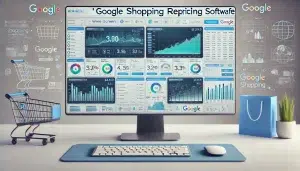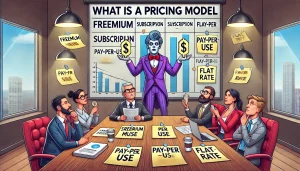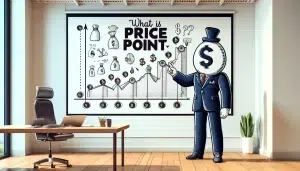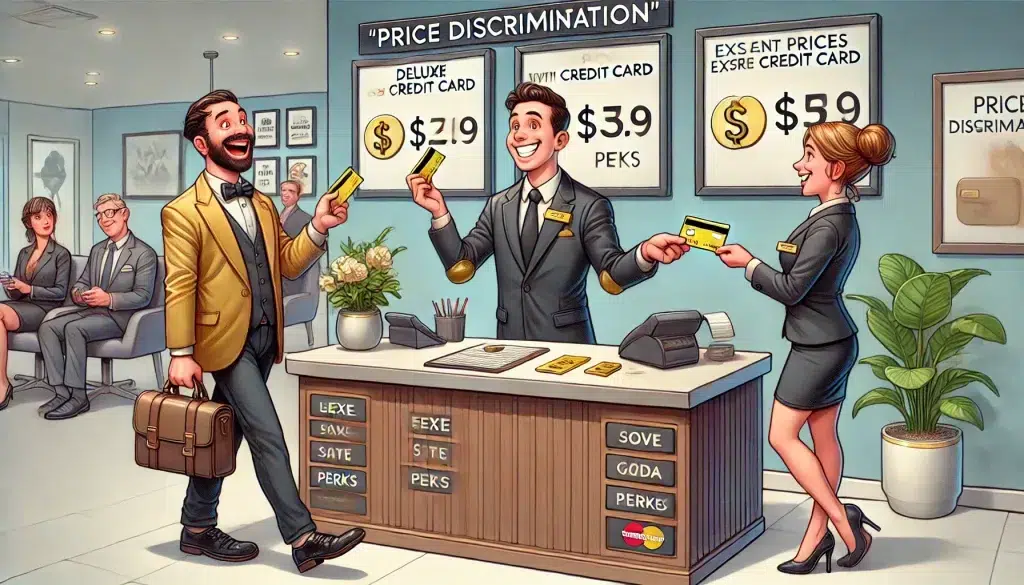
What is Price Discrimination
Price discrimination is a pricing strategy where a company sells the same product or service at different prices to different customers or market segments. I
t’s based on the principle that various customers have different willingness to pay, and by tailoring prices, businesses can maximize their profits.
In e-commerce, price discrimination allows you to charge higher prices to customers who are willing to pay more, while still capturing sales from price-sensitive customers.
Table of Contents
- What is Price Discrimination?
- The Three Degrees of Price Discrimination
- Real-World Examples of Price Discrimination
- The Economics Behind Price Discrimination
- Implementing Price Discrimination in E-commerce
- Myth-Busting: Common Misconceptions About Price Discrimination
- My Experience with Price Discrimination
- How Pricefy Can Help with Price Discrimination
- Future Trends
- Pro Tips: Quick Tips for Effective Price Discrimination
- Common Pitfalls to Avoid
- What Not to Do: Price Discrimination Gone Wrong
- Legal and Ethical Considerations
- Conclusion: Mastering the Art of Price Discrimination
- FAQs
- Useful Links
The Three Degrees of Price Discrimination
Price discrimination isn’t a one-size-fits-all approach. There are three main types, each with its own characteristics and applications:
1. First-Degree Price Discrimination
Also known as perfect price discrimination, this is the holy grail of pricing strategies. Here’s the lowdown:
- What it is: Charging each customer the maximum price they’re willing to pay.
- How it works: You’d need to know exactly what each customer is willing to shell out – talk about mind reading!
- Real-world application: It’s rare, but some high-end luxury goods or personalized services come close.
2. Second-Degree Price Discrimination
This is where things get interesting for e-commerce businesses:
- What it is: Offering different prices based on quantity purchased or product versions.
- How it works: Think bulk discounts or premium vs. basic versions of your product.
- Examples:
- Buy-one-get-one-half-off deals
- Software with different feature tiers
3. Third-Degree Price Discrimination
The most common form you’ll encounter:
- What it is: Charging different prices to different market segments.
- How it works: You divide your customer base into groups and price accordingly.
- Examples:
- Student discounts
- Geographic pricing
Real-World Examples of Price Discrimination
Let’s dive into some examples that’ll make this concept crystal clear:
- Airline Tickets: Ever noticed how the person next to you might have paid a completely different price for their seat? That’s third-degree price discrimination in action.
- Streaming Services: Companies like Netflix offer different subscription tiers – a classic case of second-degree price discrimination.
- Grocery Store Coupons: By offering coupons, stores can charge different prices to price-sensitive customers without lowering prices for everyone.
- E-books vs. Physical Books: Publishers often price e-books differently from their physical counterparts, taking advantage of different market segments.
- Happy Hour Specials: Restaurants and bars use time-based pricing to attract price-sensitive customers during off-peak hours.
Here is a nice YouTube video about Price Discrimination
The Economics Behind Price Discrimination
Now, let’s get our geek on for a moment. Price discrimination works because of a little thing called consumer surplus. Here’s the scoop:
- Consumer Surplus: The difference between what a customer is willing to pay and what they actually pay.
- Producer Surplus: The extra revenue a business earns by charging different prices.
By implementing price discrimination, you’re essentially capturing more of that consumer surplus and turning it into producer surplus. Ka-ching! 💰
But here’s the kicker – for price discrimination to work, you need:
- Market power (you can’t be in a perfectly competitive market)
- The ability to segment your market
- A way to prevent resale between segments
Implementing Price Discrimination in E-commerce

Ready to put this theory into practice? Here’s a step-by-step guide to implementing price discrimination in your e-commerce business:
- Analyze Your Customer Base: Who are your customers? What are their buying habits?
- Segment Your Market: Divide your customers into groups based on willingness to pay.
- Develop Pricing Strategies: Create different pricing tiers or discounts for each segment.
- Implement Technical Solutions: Use dynamic pricing algorithms or personalized offers.
- Monitor and Adjust: Continuously analyze results and refine your approach.
Remember, the key is to be subtle. You don’t want customers feeling like they’re getting a raw deal!
Myth-Busting: Common Misconceptions About Price Discrimination
Let’s clear the air about some price discrimination myths:
- Myth: Price discrimination is always illegal.
Reality: It’s legal in many cases, as long as it’s not based on protected characteristics. - Myth: Customers will always resent different pricing.
Reality: When done right, customers can appreciate personalized pricing. - Myth: You need perfect information about customer willingness to pay.
Reality: Even imperfect price discrimination can increase profits.
My Experience with Price Discrimination

As an e-commerce manager who’s worked with numerous online stores over the past decade, I’ve seen my fair share of pricing strategies come and go. But let me tell you about the time price discrimination truly saved one of our businesses.
It was back in 2019, and I was managing an online kitchenware store that was struggling to compete with bigger players. Our prices were set uniformly across the board, and we were caught in a classic dilemma – lower prices meant razor-thin margins, while higher prices drove customers away.
That’s when we decided to take the plunge into price discrimination. Here’s what we did:
- We introduced a loyalty program, offering tiered discounts based on customer purchase history. Our reguler shoppers loved this, and it encouraged occasional buyers to purchase more.
- We implemented dynamic pricing with Pricefy, based on time of day and week. Weekennd shoppers, we discovered, were less price-sensitive, so we slightly increased prices during peak browsing times.
- We created bundles of complementary products, offering a discount on the set. This allowed us to maintain higher prices on individual items while still appealing to bargain hunters.
- We experimented with geographic pricing, adjusting our prices based on the cost of living in different regions. This was a game-changer for our international sales.
The results? In just six months, our revenue increased by 28%, and our profit margins improved by 15%. But here’s the kicker – our customer satisfaction scores actually went up! People appreciated the personalized deals and the variety of options we now offered.
Of course, it wasn’t all smooth sailing. We had to be careful not to overomplicate our pricing structure, and we needed to ensure our practices were fully compliant with e-commerce regulations. We also had to invest in some sophisticated pricing software to manage all these variables.
But overall, this experience taught me that when done thoughtfully and ethically, price discrimination can be a powerful tool in an e-commerce manager’s arsenal. It’s not just about maximizing profits – it’s about finding that sweet spot where you can offer real value to different customer segments while keeping your business healthy and competitive.
So, if you’re on the fence about implementing price discrimination in your e-commerce store, I’d say go for it – but start small, test rigorously, and always keep your customers’ best interests at heart. Trust me, your bottom line will thank you!
How Pricefy Can Help with Price Discrimination
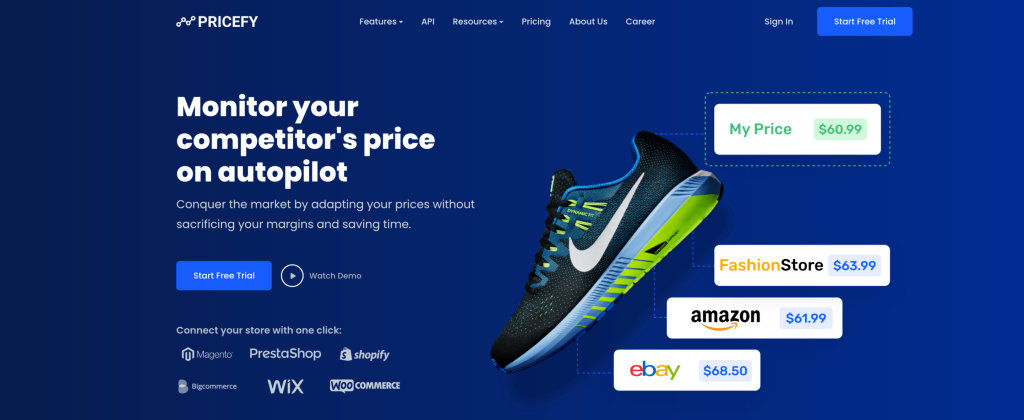
If you’re feeling overwhelmed by the prospect of implementing price discrimination, fear not! Pricefy is here to save the day. This powerful pricing tool can:
- Implement dynamic pricing algorithms based on real-time market conditions
- Provide insights into customer behavior and willingness to pay
- Help you create and manage different pricing tiers
With Pricefy, you can take the guesswork out of price discrimination and start boosting your profits today!
Future Trends
Hold onto your hats, folks, because the future of price discrimination is looking pretty wild:
- AI-Powered Personalization: Imagine prices tailored to each customer’s unique preferences and behavior.
- Real-Time Dynamic Pricing: Prices that change by the second based on supply, demand, and competitor actions.
- Blockchain for Transparent Pricing: Using blockchain technology to ensure fair and transparent price discrimination practices.
- Augmented Reality Shopping: AR experiences that offer personalized pricing in immersive environments.
Pro Tips: Quick Tips for Effective Price Discrimination
Ready for some ninja-level price discrimination tactics? Here are some pro hacks to take your pricing strategy to the next level:
- Leverage FOMO: Create time-limited offers to encourage quick purchases.
- Bundle Strategically: Offer product bundles at different price points to appeal to various customer segments.
- Use Decoy Pricing: Introduce a high-priced option to make your target price point more attractive.
- Implement Price Fencing: Create barriers that prevent resale between market segments.
- Harness the Power of Anchoring: Start with a high price to make subsequent offers seem more attractive.
Common Pitfalls to Avoid
Even the savviest e-commerce entrepreneurs can stumble when it comes to price discrimination. Here are some pitfalls to watch out for:
- Over-Complication: Don’t create so many price tiers that customers get confused.
- Ignoring Customer Perception: Always consider how your pricing strategy will be perceived by your audience.
- Neglecting Legal Considerations: Make sure your price discrimination practices comply with local laws and regulations.
- Failing to Monitor and Adjust: Don’t set it and forget it – continually refine your approach based on results.
- Lack of Transparency: Be upfront about your pricing strategies to build trust with your customers.
What Not to Do: Price Discrimination Gone Wrong
Learning from others’ mistakes can save you a world of hurt. Here are some cautionary tales of price discrimination gone awry:
- The Airline Fiasco: A major airline faced backlash when customers discovered vastly different prices for the same flights based on browsing history.
- The Retail Giant’s Blunder: A large e-commerce platform was caught charging higher prices to users of certain mobile devices, leading to public outrage.
- The Software Slip-Up: A software company’s attempt at geographic pricing backfired when users found ways to exploit regional price differences.
The lesson? Be strategic, be fair, and always put yourself in your customers’ shoes.
Legal and Ethical Considerations

Before you go all-in on price discrimination, let’s talk about keeping things on the up-and-up:
- Know the Law: Familiarize yourself with anti-discrimination laws in your jurisdiction.
- Be Transparent: Clearly communicate your pricing policies to customers.
- Avoid Protected Characteristics: Never base pricing on race, gender, religion, or other protected characteristics.
- Consider Fairness: While maximizing profits is important, consider the long-term impact on customer relationships.
Remember, just because you can charge different prices doesn’t always mean you should. Use your power wisely, young Padawan.
Conclusion: Mastering the Art of Price Discrimination
Whew! We’ve covered a lot of ground, haven’t we? From the basics of price discrimination to advanced strategies and pitfalls to avoid, you’re now armed with the knowledge to take your e-commerce pricing to the next level.
Remember, price discrimination isn’t about gouging customers – it’s about finding that sweet spot where you maximize profits while still providing value to different customer segments. It’s a delicate balance, but when done right, it can be a game-changer for your business.
So, what are you waiting for? It’s time to roll up your sleeves, dive into your customer data, and start experimenting with price discrimination strategies. Your bottom line will thank you!
FAQs About Price Discrimination
Q: What is a good example of price discrimination?
A: classic example is movie theaters offering discounted tickets for students and seniors.
Q: What is the most efficient price discrimination?
A: First-degree price discrimination is theoretically the most efficient, but it’s rarely achievable in practice.
Q: What are the three levels of price discrimination?
A: First-degree (perfect), second-degree (quantity-based), and third-degree (group-based) price discrimination.
Q: Does price discrimination increase profit?
A: Yes, when implemented correctly, price discrimination can significantly increase profits by capturing more consumer surplus.
Q: What is the discriminatory pricing rule?
A: The rule states that to maximize profits, the ratio of price to marginal cost should be inversely proportional to the price elasticity of demand for each market segment.
Q: Is it legal to sell the same product at different prices?
A: Generally yes, as long as the price differences aren’t based on protected characteristics like race or gender.
Q: What is 2nd degree price discrimination?
A: It’s when prices differ based on quantity purchased or product version, like bulk discounts or premium vs. basic software versions.
Q: Why do companies practice price discrimination?
A: To maximize profits by charging different prices to customers with different willingness to pay.
Q: What is perfect price discrimination?
A: It’s when a company charges each customer exactly their maximum willingness to pay, capturing all consumer surplus.
Q: How does price discrimination work?
A: It works by segmenting customers based on their willingness to pay and charging different prices to different segments.
Q: What is predatory pricing?
A: Predatory pricing is when a company sets prices so low that it drives competitors out of the market, which is illegal in many jurisdictions.
Q: What is hurdle pricing?
A: Hurdle pricing is a form of second-degree price discrimination where customers must overcome a “hurdle” (like filling out a rebate form) to get a lower price.
Q: Why is price discrimination wrong?
A: Price discrimination isn’t inherently wrong, but it can be perceived as unfair if not implemented transparently or if it exploits vulnerable groups.
Q: What is a real-life example of price discrimination?
A: Airlines charging different prices for the same flight based on when the ticket is purchased is a common real-life example.
Q: What are the three conditions necessary for price discrimination?
A: Market power, ability to segment the market, and prevention of resale between segments.
Useful Links
- Pricing Strategy Guide – A comprehensive resource for developing effective pricing strategies.
- Harvard Business Review: How to Price Effectively – Insights on value-based pricing from a leading business publication.
- Legal Considerations in Pricing – A guide from the Federal Trade Commission on antitrust laws and price discrimination.
Dynamic Pricing in E-commerce – Learn how to implement dynamic pricing in your online store.

